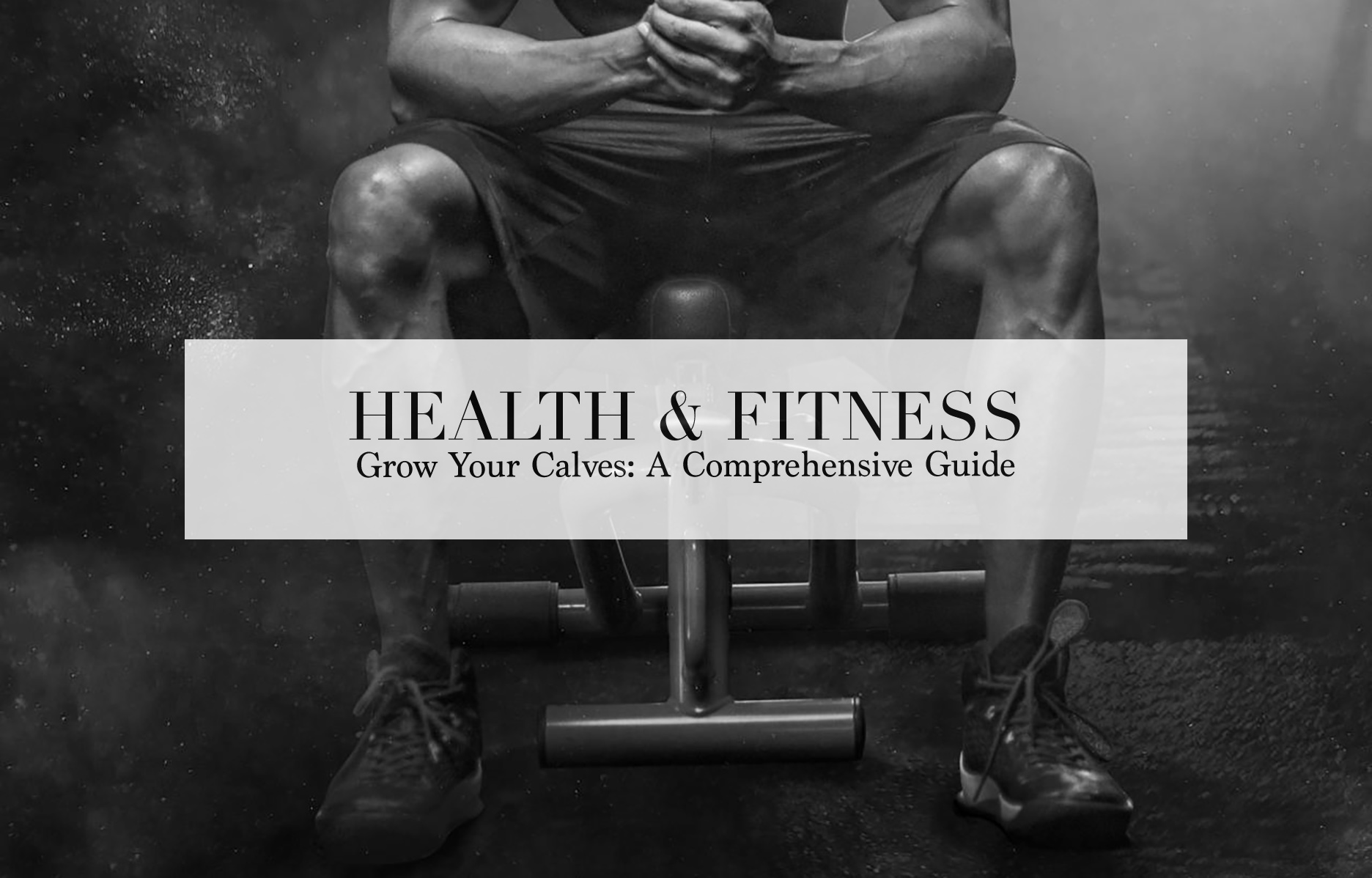When it comes to achieving a well-rounded physique, many individuals tend to focus primarily on upper body development, often neglecting the importance of building strong and aesthetic lower legs. Calves, in particular, are notoriously challenging to develop for many people. However, with the right approach and dedication, you can transform your calves into impressive pillars of strength and symmetry. In this comprehensive guide, we’ll delve into the strategies, exercises, and principles necessary for building bigger calves and achieving balanced lower body development.
Understanding Calf Anatomy:
Before diving into the specifics of calf training, it’s crucial to understand the anatomy of the calf muscles. The calves consist of two primary muscles: the gastrocnemius and the soleus. The gastrocnemius is the larger, more visible muscle that forms the bulge at the back of the lower leg. It has two heads, or points of origin, which contribute to its size and shape. The soleus lies beneath the gastrocnemius and plays a significant role in ankle flexion and stability.
Training Principles for Calf Growth:
To effectively stimulate calf growth, it’s essential to apply certain training principles:
- Progressive Overload: Just like any other muscle group, the calves require progressive overload to grow. This means gradually increasing the weight, reps, or intensity of your calf exercises over time to challenge the muscles and promote adaptation.
- Variety: The calves respond well to a variety of exercises and rep ranges. Incorporating different exercises and angles into your calf workouts ensures that you target the muscles from various angles and stimulate growth more effectively.
- Frequency: Unlike some other muscle groups, the calves can tolerate and benefit from higher training frequencies. Consider training your calves 2-3 times per week to ensure adequate stimulation and recovery.
- Mind-Muscle Connection: Focus on establishing a strong mind-muscle connection with your calves during exercises. Concentrate on squeezing the muscles at the peak of each contraction to maximise muscle recruitment and engagement.
Effective Calf Exercises:
Now, let’s explore some of the most effective exercises for building bigger calves:
- Standing Calf Raise: This classic calf exercise targets the gastrocnemius muscle and can be performed using a calf raise machine, Smith machine, or with free weights. Stand with your feet shoulder-width apart, push through the balls of your feet, and raise your heels as high as possible before slowly lowering them back down.
- Seated Calf Raise: The seated calf raise places more emphasis on the soleus muscle. Sit on a calf raise machine with your knees bent at 90 degrees and your feet resting on the platform. Push through the balls of your feet to raise your heels, then lower them back down under control.
- Donkey Calf Raise: This exercise targets both the gastrocnemius and soleus muscles and is performed using a specialised donkey calf raise machine or with a partner providing resistance on your back. Lean forward and place your forearms on a pad or surface, then push through the balls of your feet to raise your heels.
- Single-Leg Calf Raise: Performing calf raises one leg at a time can help address any strength imbalances between your calves. Stand on the edge of a step or platform with the balls of one foot on the edge, then raise and lower your heel using only that leg.
Advanced Training Techniques:
For those seeking to take their calf training to the next level, incorporating advanced training techniques can provide an extra stimulus for growth:
- Drop Sets: After reaching failure with a heavy weight, immediately reduce the weight and continue performing reps to failure. This technique helps to increase the intensity of your calf workouts and promote muscle growth.
- Partial Reps: Incorporating partial reps at the end of a set can help prolong time under tension and further fatigue the muscles, leading to greater growth stimulus.
- Supersets: Pairing two different calf exercises back-to-back without rest can provide an intense pump and maximise muscle recruitment.
- Eccentric Training: Focus on emphasising the eccentric, or lowering, phase of each calf exercise by slowing down the descent of the weight. This technique has been shown to induce greater muscle damage and stimulate growth.
Nutrition and Recovery:
In addition to effective training, proper nutrition and recovery are essential for maximising calf growth. Ensure you’re consuming an adequate amount of protein to support muscle repair and growth, along with sufficient calories to fuel your workouts. Additionally, prioritise adequate sleep and recovery to allow your muscles to repair and grow between workouts.
Building bigger calves requires a combination of effective training, consistency, and patience. By applying the principles outlined in this guide and incorporating a variety of exercises and techniques into your calf workouts, you can sculpt impressive lower legs that complement your overall physique. Remember to focus on progressive overload, maintain a strong mind-muscle connection, and prioritise proper nutrition and recovery for optimal results. With dedication and persistence, you can achieve the well-developed calves you’ve always desired.

